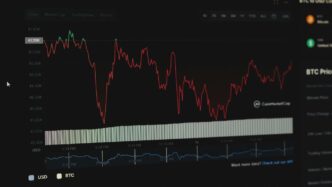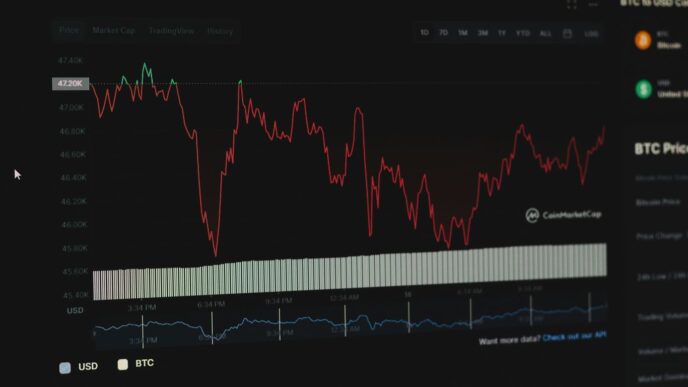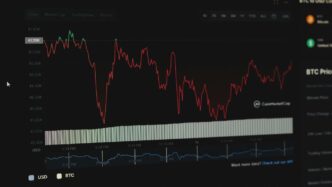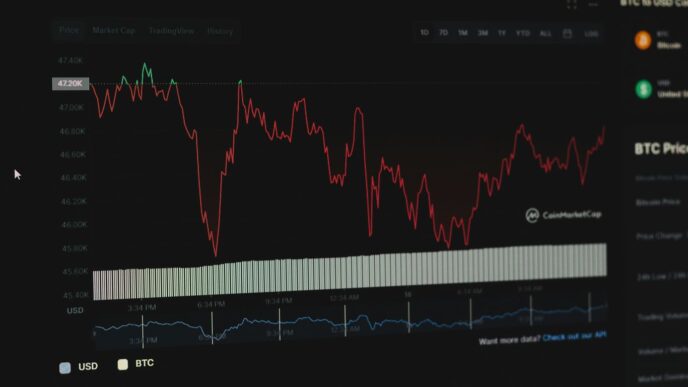Getting money for your venture capital fund can be tricky, especially when you’re trying to get attention from limited partners, or vc lps. It’s not just about having a great idea; you also need to know who to talk to and how to talk to them. This guide will help you figure out the world of vc lps, from understanding different types of investors to making your fund look good to them. We’ll cover everything you need to know to get your fund off the ground and keep it going strong.
Key Takeaways
- Not all vc lps are the same; they each have their own likes and dislikes.
- New funds often get money from individuals and family offices first, not big institutions.
- Your fund needs a clear story that shows why it’s special and worth investing in.
- Building relationships with vc lps takes time, so start early and keep in touch.
- Using technology can make it easier to find and talk to vc lps.
Understanding the VC LPs Landscape
Okay, so you’re trying to raise a fund. That means you need to understand who your investors are. It’s not just about finding someone with deep pockets; it’s about finding the right someone. Let’s break down the world of VC LPs.
Diverse Investor Archetypes
There’s a whole range of LPs out there, and they’re not all the same. You’ve got your high-net-worth individuals, family offices, corporate investors, and big institutions like pension funds and endowments. Each one has different goals, risk tolerances, and investment horizons. A family office might be more willing to take a bet on a new fund manager than a pension fund, which has a fiduciary duty to be more conservative. Knowing who you’re talking to is half the battle. For example, some LPs may have regional fit preferences.
Tailoring Your Pitch to VC LPs
Once you know the different types of LPs, you need to tailor your pitch. What works for one won’t necessarily work for another. A sophisticated institutional investor will want to see detailed financial projections and a proven track record. A high-net-worth individual might be more interested in the story behind your fund and your personal connection to the space. It’s about speaking their language and showing them why you are the best place for their money. Think of it like this: you wouldn’t use the same resume for a tech company as you would for a non-profit, right? Same idea here. You need to understand the next generation of VCs and how they think.
The Importance of Alignment
Alignment is key. It’s not just about getting a check; it’s about finding LPs who believe in your vision and are willing to stick with you through thick and thin. Do they understand your investment strategy? Are they comfortable with the level of risk you’re taking? Do they share your values? If the answers to these questions are no, then it’s probably not a good fit, even if they’re offering you money. Remember, these are long-term relationships, and you want to be on the same page. It’s like dating – you want to make sure you’re compatible before you commit! Consider the limited partner investment criteria.
Identifying Key VC LPs Segments
It’s easy to think all limited partners (LPs) are the same, but that’s just not true. They come in all shapes and sizes, and understanding the differences is key to a successful fundraise. Knowing who you’re talking to will seriously improve your chances of getting a ‘yes’.
High Net Worth Individuals and Family Offices
These are often the go-to sources of capital, especially for new VC funds. They’re usually more flexible and willing to take risks compared to larger institutions. Think of them as the early adopters of the VC world. They can move faster and are often more open to backing emerging managers. Here’s what to keep in mind:
- They value personal relationships. Get to know them, understand their interests, and build trust.
- They’re looking for more than just financial returns. They might be interested in impact investing or supporting specific industries.
- They appreciate clear and concise communication. Don’t bury them in jargon or overly complex strategies.
Navigating Institutional VC LPs
These are the big players: pension funds, endowments, and insurance companies. They manage huge sums of money, so getting their attention can be a game-changer. However, they also have strict investment criteria and lengthy decision-making processes. Some things to consider:
- They often have minimum fund size requirements. If your fund is too small, they might not even consider it.
- They prioritize established track records. It’s harder for first-time fund managers to break in.
- They require extensive due diligence. Be prepared to answer a lot of questions and provide detailed information.
Corporate Investors and Their Preferences
More and more corporations are getting into the VC game, either through direct investments or by becoming LPs in venture funds. They often have strategic goals in mind, such as gaining access to new technologies or markets. Here’s what makes them unique:
- They’re interested in synergies with their existing business. Show them how your fund can help them achieve their corporate objectives.
- They might have specific industry focuses. Tailor your pitch to align with their areas of interest.
- They can be valuable partners beyond just capital. They can offer expertise, resources, and access to their networks.
Crafting a Compelling Value Proposition for VC LPs
Fundraising is tough. You’re basically selling a dream, and LPs need to really believe in that dream. It’s not just about returns; it’s about what makes your fund different and why they should pick you over everyone else. Let’s break down how to make your fund irresistible.
Defining Your Fund’s Unique Edge
What makes you, you? It’s not enough to say you’re "focused on innovation." Everyone is. Dig deeper. Are you hyper-specialized in a niche like AI-driven agriculture? Do you have a proprietary sourcing method? Your unique edge is the secret sauce that LPs can’t find anywhere else. Think about your team’s background, your network, and the specific problems you’re solving. This is your brand, your identity, and what will stick in an LP’s mind after dozens of pitches.
Showcasing Your Investment Strategy
Your investment strategy needs to be crystal clear. LPs want to know exactly how you plan to generate returns. What sectors are you targeting? What stage companies do you prefer? What’s your average check size? Don’t just say you’re "opportunistic." That’s a red flag. Provide specifics. For example:
- Sector Focus: SaaS, Fintech, Healthcare IT
- Stage: Seed and Series A
- Geography: North America with a focus on the Southeast
- Investment Size: $500k – $2M
Also, explain your process for planning exit strategies. How do you help founders prepare for an exit? What are your target multiples? The more detail, the better. LPs need to see that you have a well-thought-out plan, not just a hunch.
Leveraging Your Track Record
Track record is king (or queen). If you have a previous fund, highlight your successes. Show the numbers. Don’t hide the failures, either. Be transparent about what you learned and how you’ve improved. If you’re a first-time fund manager, focus on your individual track record. What deals have you sourced and led in the past? What value did you add to those companies? Even if it’s not a formal fund, demonstrate your ability to pick winners and help founders polish their narrative. LPs are betting on you, so make sure they know what you’re capable of. A table showing previous investments can be helpful:
| Company | Sector | Stage | Investment Amount | Current Valuation | Multiple |
|---|---|---|---|---|---|
| Company A | SaaS | Seed | $250k | $10M | 40x |
| Company B | Fintech | Series A | $500k | $5M | 10x |
| Company C | Healthcare IT | Seed | $100k | $0 (Write-off) | 0x |
Strategic Fundraising for New VC Funds
Fundraising for a new VC fund can feel like climbing a mountain. It’s tough, but with the right strategy, you can reach the summit. The key is to focus on building relationships and understanding the specific needs of different LP types. Let’s break down how to approach this.
Prioritizing Early-Stage VC LPs
When you’re just starting out, aiming for the big institutional investors might seem tempting, but it’s often more effective to focus on smaller players first. Think of it as building momentum. High-net-worth individuals (HNWIs) and smaller family offices are often more willing to take a chance on emerging managers. They can also move faster than larger institutions, which have more layers of approval. These early wins can provide the necessary track record to attract bigger LPs down the road.
Consider these points when approaching early-stage LPs:
- Personal Connection: These investors often value personal relationships, so make an effort to connect on a deeper level.
- Clear Communication: Be transparent about your strategy and potential risks. They appreciate honesty.
- Smaller Commitments: They’re more likely to start with smaller investments, so don’t be afraid to ask for less.
Building Long-Term Relationships with VC LPs
Fundraising isn’t a one-time event; it’s an ongoing process. Even if an LP isn’t ready to invest in your first fund, nurturing that relationship can pay off in the future. Keep them updated on your progress, share insights, and demonstrate your expertise. Think of it as planting seeds that will eventually grow into fruitful partnerships.
Here’s how to cultivate those relationships:
- Regular Updates: Send quarterly or semi-annual updates on your fund’s performance and activities.
- Industry Insights: Share your thoughts on market trends and investment opportunities.
- Personal Touches: Remember their interests and tailor your communication accordingly.
The Role of Regional Fit
Just like VCs often focus on specific sectors or geographies, LPs may also have regional preferences. An LP in the Midwest might be more interested in funds that invest in companies in that region, for example. Understanding these preferences can help you target your fundraising efforts more effectively. It’s about finding the right fit, both for your fund and for the LP.
Consider these factors when assessing regional fit:
- LP’s Investment Mandate: Does their mandate align with your fund’s geographic focus?
- Local Expertise: Do they have experience investing in the region you’re targeting?
- Network Connections: Can they provide valuable connections and resources in that area?
Optimizing Your Fundraising Process with VC LPs

Okay, so you’ve got a fund, you’ve got a strategy, and now you need the cash. Let’s talk about making that fundraising process as smooth as possible. It’s not just about pitching; it’s about being smart and efficient with your time and resources.
Researching VC LPs Needs
Before you even think about sending out a pitch deck, do your homework. I mean, really do your homework. Don’t just look at their website; dig into their past investments, their stated preferences, and any public information you can find. What sectors do they like? What size funds do they typically invest in? What are their geographic focuses? Understanding their needs upfront will save you a ton of time and wasted effort. It’s like trying to sell snow to Eskimos if you don’t. You need to understand investor types and their unique needs.
Developing Impactful Fundraising Materials
Your fundraising materials are your first impression, so make them count. A generic pitch deck just won’t cut it. You need something that’s clear, concise, and compelling. Think about it from the LP’s perspective: they’re seeing dozens of these things every week. What’s going to make yours stand out? Focus on your unique value proposition, your team’s expertise, and your track record. And for goodness’ sake, get a professional designer to make it look good. Here are some things to consider:
- Pitch Deck: Highlight your team, strategy, and potential returns.
- One-Pager: A concise summary of your fund for quick reference.
- Due Diligence Materials: Be prepared to answer tough questions with data.
Establishing a Robust Lead Generation Funnel
Don’t just rely on your existing network. You need a system for finding and qualifying new leads. This means actively searching for LPs who are a good fit for your fund and then systematically reaching out to them. Use tools like LinkedIn, industry databases, and attend relevant conferences to expand your reach. Think of it like building a sales pipeline – you need to constantly be adding new leads to keep the process moving. It’s about capital formation and consuming a significant share of their time.
Continuous Improvement in VC LPs Engagement
It’s not enough to just get the money; you need to keep those LPs happy and informed. This means constantly looking for ways to improve how you interact with them. The VC world changes fast, and what worked last year might not work today. So, let’s talk about how to stay ahead of the curve.
Gathering and Leveraging Feedback
The best way to improve is to ask for feedback. Don’t be afraid to reach out to your LPs and ask them what they think. What are you doing well? What could you be doing better? Be specific with your questions to get useful answers. It’s not just about asking; it’s about actually listening and acting on what they say. Here’s a simple way to structure feedback:
- Regular Surveys: Send out short, focused surveys a couple of times a year.
- One-on-One Meetings: Schedule calls to discuss their experience and concerns.
- Informal Check-ins: A quick email or call to see how they’re feeling about the fund’s performance.
Adapting to Evolving VC LPs Preferences
What LPs want changes over time. Maybe they’re more interested in LLC formation in India now, or maybe they’re focusing on different sectors. You need to stay on top of these trends and adjust your approach accordingly. This could mean changing your reporting, your investment strategy, or even the way you communicate. It’s about being flexible and responsive to their needs. For example, consider these shifts:
- ESG Investing: More LPs are prioritizing environmental, social, and governance factors.
- Impact Investing: Some LPs want to see a positive social or environmental impact from their investments.
- Data-Driven Reporting: LPs expect more detailed and transparent data on fund performance.
Nurturing Relationships Over Time
Fundraising isn’t a one-time thing; it’s about building long-term relationships. Keep in touch with your LPs even when you’re not actively raising money. Share updates on your portfolio companies, invite them to events, and generally make them feel like they’re part of your team. A strong relationship can make all the difference when you’re ready to raise your next fund. Here are some ideas:
- Regular Updates: Send out quarterly or monthly newsletters with fund updates.
- Exclusive Events: Host events for your LPs to network and learn about your portfolio companies.
- Personalized Communication: Tailor your communication to each LP’s interests and preferences.
The Critical Role of Technology in Engaging VC LPs
Technology is changing how venture capital funds connect with their limited partners (LPs). It’s not just about having a website anymore; it’s about using tech to make the whole fundraising and relationship-building process smoother and more effective. Let’s look at some key areas where tech is making a difference.
Enhancing Capital Formation Efficiency
Fundraising can take up a huge chunk of a VC’s time – time that could be spent finding and helping portfolio companies. Technology can streamline many aspects of capital formation, freeing up valuable time. For example, instead of spending hours on manual tasks, VC firms can use tech to automate processes.
Here are some ways tech helps:
- Automated Reporting: Tools that automatically generate reports for LPs, saving time and reducing errors.
- Digital Due Diligence: Platforms that facilitate the sharing and review of documents during due diligence.
- Online Subscription: Secure portals where LPs can complete subscription documents electronically.
Streamlining Communication with VC LPs
Keeping LPs informed is super important, but it can be a lot of work. Tech offers ways to communicate more efficiently and transparently. Think beyond just sending emails; consider using platforms designed for investor relations. These platforms can help you share updates, answer questions, and build stronger relationships. Regular interaction is key. VC firms should prioritize proactive communication with their portfolio companies.
Here’s how technology can improve communication:
- Investor Portals: Secure online portals where LPs can access fund performance data, reports, and other important information.
- Automated Updates: Systems that automatically send out regular updates to LPs, keeping them informed about fund activities.
- Video Conferencing: Tools for conducting virtual meetings with LPs, making it easier to connect regardless of location.
Utilizing Data for Informed Decisions
Data is king, and that’s true in the VC world too. By tracking and analyzing data related to LP interactions, fund performance, and market trends, VCs can make smarter decisions about their fundraising strategies and investor relations efforts. It’s about using data to understand what’s working and what’s not, and then adjusting your approach accordingly. This includes using relationship data strategically. Specialized tools can capture and analyze data to offer insights.
Here are some examples of how data can be used:
- LP Engagement Tracking: Monitoring which LPs are most engaged with your content and activities, helping you prioritize your outreach efforts.
- Fund Performance Analysis: Analyzing fund performance data to identify trends and areas for improvement, which can be shared with LPs to demonstrate your commitment to excellence.
- Market Trend Monitoring: Tracking market trends and competitor activity to inform your fundraising strategy and messaging.
Wrapping It Up
So, there you have it. Getting money for your VC fund can seem like a lot, but it’s really about knowing who you’re talking to. Not all money people are the same, and what one person wants, another might not care about at all. If you figure out what each type of investor likes, and then show them how your fund fits right in with their goals, you’re in a good spot. It’s not just about getting money now, but also about building good connections for the future. Keep those relationships going, even if someone doesn’t invest right away. You never know when they might be ready to jump in.
Frequently Asked Questions
What are VC LPs?
VC LPs are Limited Partners in Venture Capital funds. They are the people or groups who put money into a VC fund, but they don’t actually manage the fund or decide which companies to invest in. They’re basically the investors providing the cash.
Who are the different types of VC LPs?
There are different kinds of VC LPs, like wealthy individuals and families (called High Net Worth Individuals or Family Offices), big organizations like universities or pension funds (Institutional Investors), and even other companies (Corporate Investors). Each type has its own reasons for investing and what they look for.
How do I make my fund attractive to VC LPs?
When you’re trying to get money from VC LPs, you need to show them why your fund is special. This means explaining your unique plan for investing, showing off your past successes, and making it clear what kind of companies you’ll support and how you’ll make money for them.
Which VC LPs should new funds focus on first?
For new VC funds, it’s often best to start by talking to wealthy individuals and family offices. They tend to be more open to investing in newer funds. Big institutions usually want to see a long history of success, so you build relationships with them over time.
What’s the best way to find and work with VC LPs?
It’s super important to understand what each LP wants. You should prepare clear and exciting materials that explain your fund, and create a system to find and keep track of potential investors. Good research and organization make a big difference.
Can technology help me connect with VC LPs?
Technology can help a lot! You can use special software to manage your investor relationships, share information easily, and use data to make smart choices about who to reach out to and how. This makes the whole process smoother and more effective.














